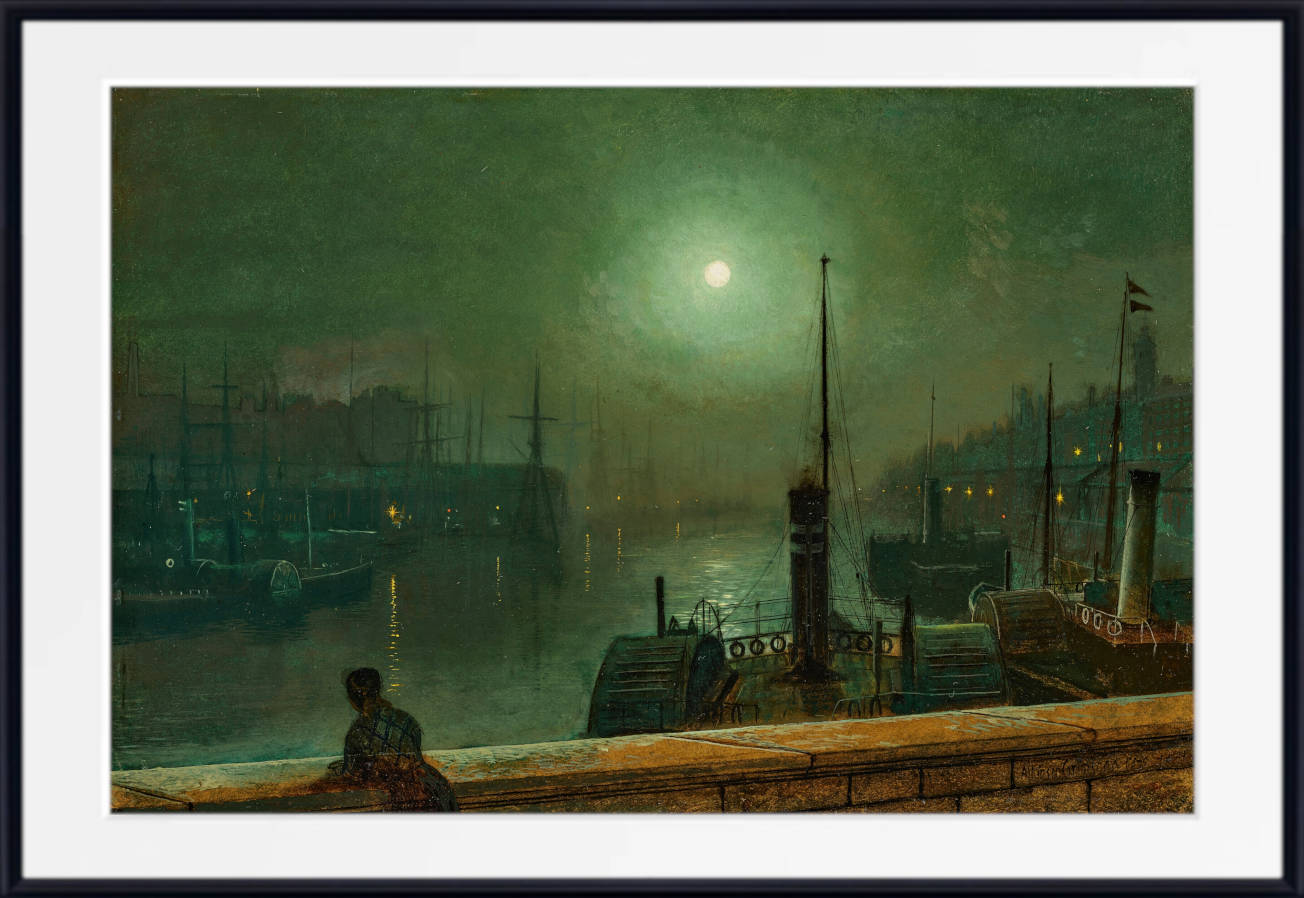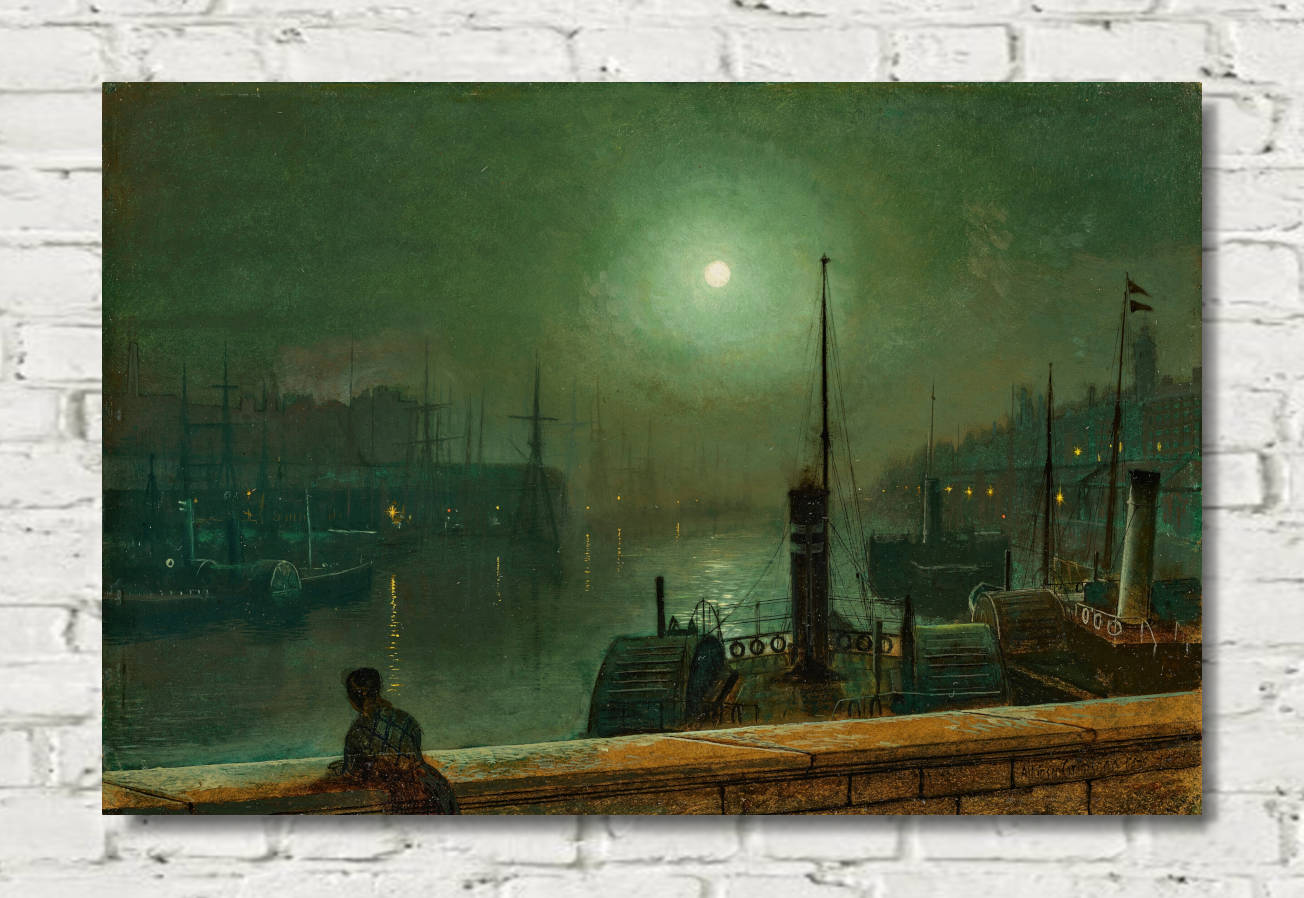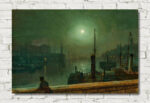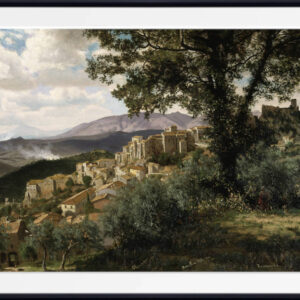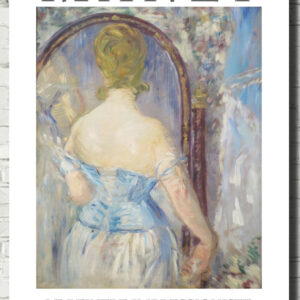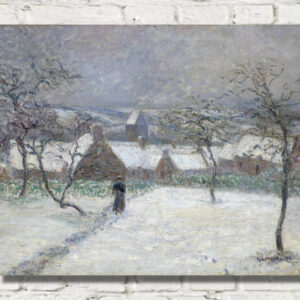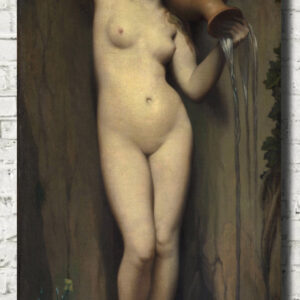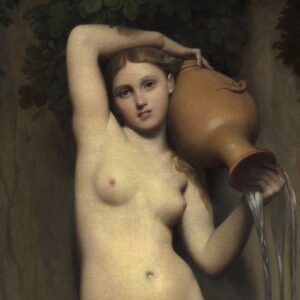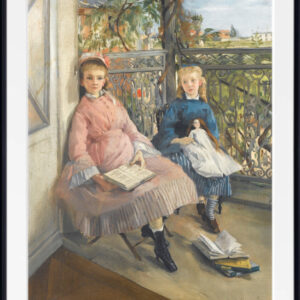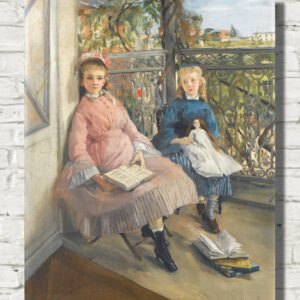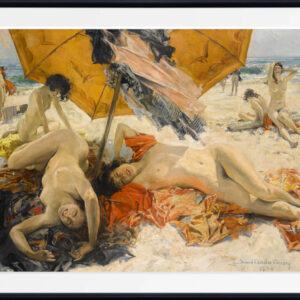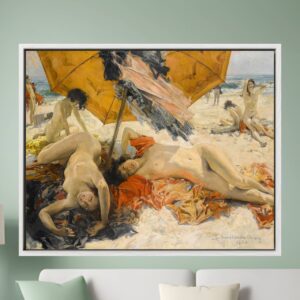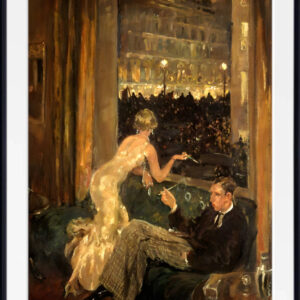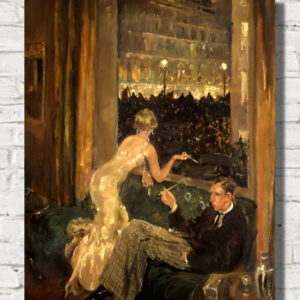John Atkinson Grimshaw Print, On the Clyde, Glasgow (1879)
John Atkinson Grimshaw Print, On the Clyde, Glasgow (1879)
John Atkinson Grimshaw’s artistic renderings of Victorian Britain’s bustling docks are exquisite tributes to the industrial era. Grimshaw skillfully transcribed the fog and mist, flawlessly conveying the bone-chilling dampness permeating the air and the way it seeped into the heavy attire of the few individuals who ventured out during the misty early mornings.
In his paintings, Grimshaw employed a masterful interplay of various light sources. He harnessed the moon’s gentle radiance, the warm glow emanating from shop interiors’ gaslights, as well as the illumination provided by street and vehicle lamps. These light sources wove a tapestry of reflections on the rain-soaked pavements and streets, creating a mesmerizing dance of luminosity. In “Shipping on the Clyde,” for instance, he skillfully portrayed sparkling highlights generated by a small roadside fire, where two dock workers sought solace from the damp and cold.
Glasgow’s commercial ascendancy dates back to the 17th century when the Clyde River port began importing a variety of goods, including tobacco, sugar, cotton, and more. Situated strategically in the western part of the country, Glasgow became a pivotal hub for re-exporting these commodities to destinations like France, Germany, Italy, Holland, Norway, the West Indies, and America.
During the 18th century, the Clyde River was expanded and deepened, and by the 19th century, Glasgow had become Scotland’s foremost port. The city also became deeply involved in shipbuilding, with half of Britain’s steamship tonnage being produced along the River Clyde by 1835. This industrial boom prompted a substantial population growth in Glasgow, surging from 77,000 in 1801 to a staggering 420,000 by 1861.
John Atkinson Grimshaw’s artworks capture the essence of this modernizing world while transcending its often grimy and melancholic reality. His inspiration drew from literary luminaries like Lord Tennyson, the “Truth to Nature” theories espoused by John Ruskin, and the rich tapestry of Celtic and Classical legends. These influences infused his contemporary depictions with an enchanting air of a bygone era. Grimshaw’s paintings serve as visual counterparts to the verbal descriptions found in 19th-century novels, evoking the vivid prose of writers such as Charles Dickens, whose words describing London’s fog could just as aptly apply to the atmospheric essence of Glasgow as depicted in Grimshaw’s “Shipping on the Clyde.”
All prints are made using archival art stocks and UV pigment inks to give up to 200 years life. Prints are sold unframed and unmounted.

